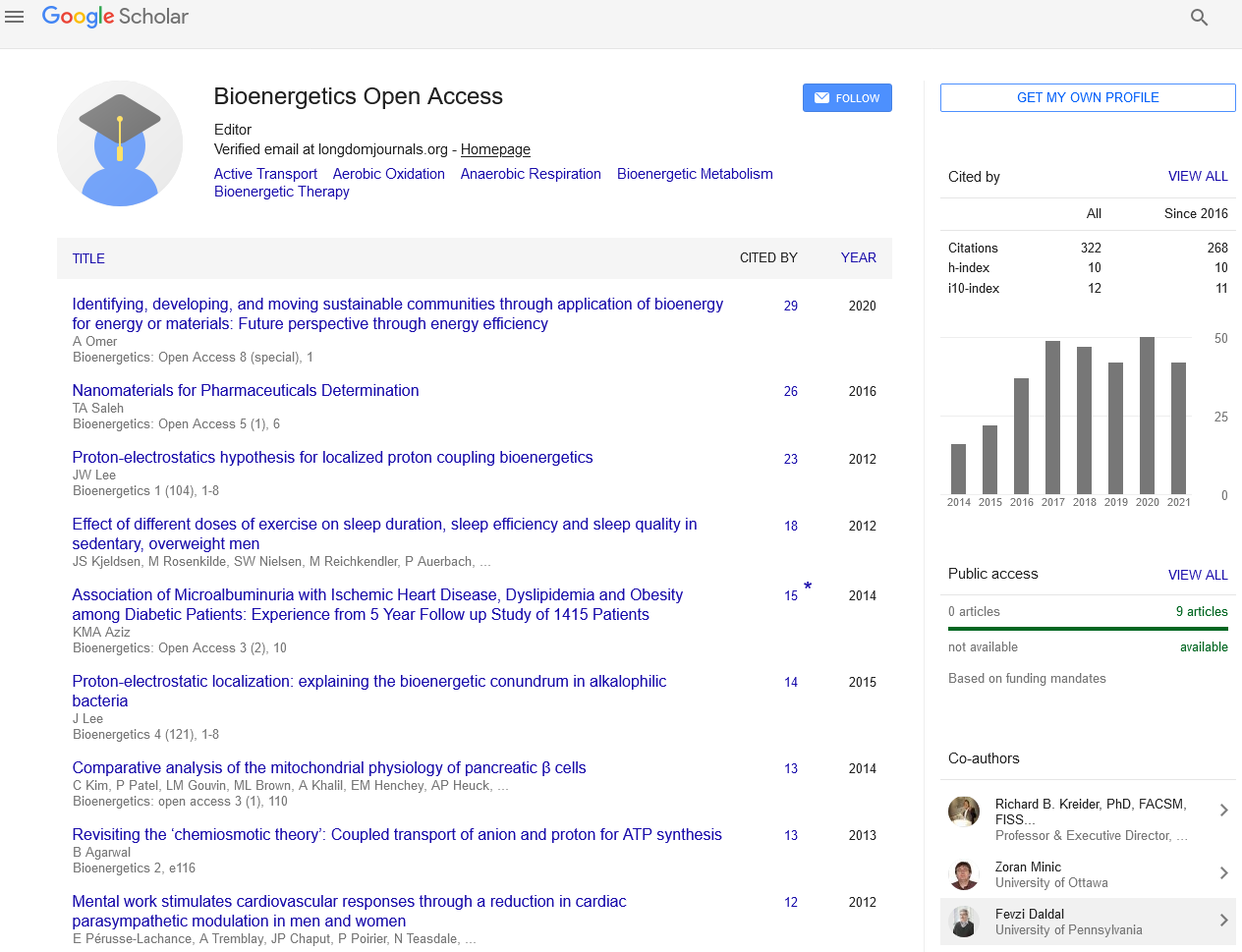Indexed In
- Open J Gate
- Genamics JournalSeek
- Academic Keys
- ResearchBible
- RefSeek
- Directory of Research Journal Indexing (DRJI)
- Hamdard University
- EBSCO A-Z
- OCLC- WorldCat
- Scholarsteer
- Publons
- Euro Pub
- Google Scholar
Useful Links
Share This Page
Journal Flyer

Open Access Journals
- Agri and Aquaculture
- Biochemistry
- Bioinformatics & Systems Biology
- Business & Management
- Chemistry
- Clinical Sciences
- Engineering
- Food & Nutrition
- General Science
- Genetics & Molecular Biology
- Immunology & Microbiology
- Medical Sciences
- Neuroscience & Psychology
- Nursing & Health Care
- Pharmaceutical Sciences
Abstract
Ensemble Molecular Dynamics of a Protein-Ligand Complex: Residual Inhibitor Entropy Enhances Drug Potency in Butyrylcholinesterase
Eric J Sorin, Walter Alvarado, Samantha Cao, Amethyst Radcliffe, Phuc La and Yi An
Butyrylcholinesterase is a key enzyme that catalyzes the hydrolysis of the neurotransmitter acetylcholine and shows an increased activity in patients suffering from Alzheimer’s disease (AD), making this enzyme a primary target in treating AD. Central to this problem, and to similar scenarios involving biomolecular recognition, is our understanding of the nature of the protein-ligand complex. The butyrylcholinesterase enzyme was studied via all-atom, explicit solvent, ensemble molecular dynamics simulations sans inhibitor and in the presence of three dialkyl phenyl phosphate inhibitors of known potency to a cumulative sampling of over 40 μs. Following relaxation of these ensembles to conformational equilibria, binding modes for each inhibitor were identified. While classical models, which assume significant reduction in both protein and ligand conformational entropies, continue to be favored in contemporary studies, our observations contradict those assumptions: bound ligands occupy many conformational states, thereby stabilizing the complex, while also promoting protein flexibility.

